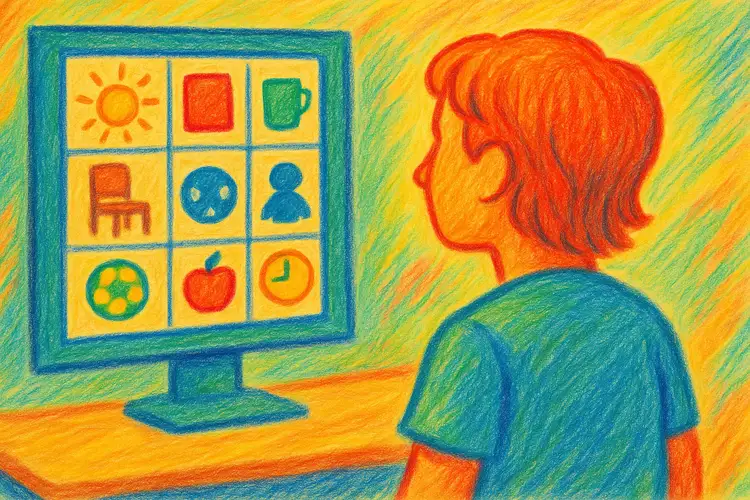Visual Support at School: Helping Children Participate
Published {$created} by Carsten Blum
Classrooms are dynamic environments full of activity, sound, and change.For many students, especially those with autism, ADHD, or language-processing differences, that constant movement can be overwhelming.
Visual support — like visual schedules, pictograms, and routine boards — transforms the classroom into a place of predictability and calm.It gives students a way to see time, understand expectations, and engage more confidently in learning.

How Visual Support Helps Students
Predictability: Students know what to expect and when activities will happen.
Reduced anxiety: Visuals lower stress by removing uncertainty.
Focus and participation: Fewer verbal instructions mean less confusion and more engagement.
Independence: Students can follow routines on their own.
Inclusivity: Visuals support both neurodivergent and neurotypical learners.
When routines are visible, everyone benefits — not just those with additional needs.
Common Uses of Visual Support in Schools
🗓️ Classroom schedules
A daily or weekly overview showing lessons, breaks, lunch, and home time.
📋 Task lists
Step-by-step visuals for assignments, group work, or art projects.
🧍 Transition cues
Icons or color-coded signals for “line up,” “clean up,” or “move to the next station.”
🗣️ Communication aids
Picture cards or boards that help non-verbal or shy students express needs and emotions.
📚 Learning materials
Visuals embedded into lesson content (e.g., science steps, math processes, reading guides).
How to Introduce Visual Support in the Classroom
Start with structure: Display a simple daily schedule at the front of the room.
Add consistency: Use the same icons or symbols across all materials.
Involve students: Let them help move or update icons as the day progresses.
Model usage: Show how to check the schedule instead of asking repeatedly.
Expand gradually: Add task boards, transition cards, and personal visual aids as needed.
Example Classroom Schedule
Time | Subject | Symbol |
|---|---|---|
08:30 | 🏫 Arrival | 🎒 |
09:00 | ✏️ Math | ➕ |
10:00 | 📖 Reading | 📚 |
10:30 | 🍎 Snack | 🍏 |
11:00 | 🎨 Art | 🖌️ |
12:00 | 🍽️ Lunch | 🍽️ |
13:00 | 🏃 Outdoor play | ⚽ |
14:00 | 📓 Homework / wrap-up | 🕓 |
Tips for Teachers and Staff
Keep visuals consistent: Use the same format across all classrooms.
Combine visuals with routine: Review the plan at the start of each day.
Celebrate independence: Encourage students to check the schedule on their own.
Refresh periodically: Update visuals as activities change through the year.
Include the whole class: Visuals aren’t just for special education — they support all learners.
Benefits Beyond the Classroom
When schools use visual supports consistently, students develop transferable skills:
Managing transitions
Understanding time and sequence
Planning tasks independently
Communicating needs clearly
These are lifelong skills that strengthen learning and self-regulation far beyond school walls.
Summary
Visual tools in the classroom aren’t just accommodations — they’re foundations for learning.By making time, expectations, and communication visible, teachers create inclusive spaces where every child can thrive.
Next step: Try introducing a simple daily schedule in your classroom and see how it changes the atmosphere.